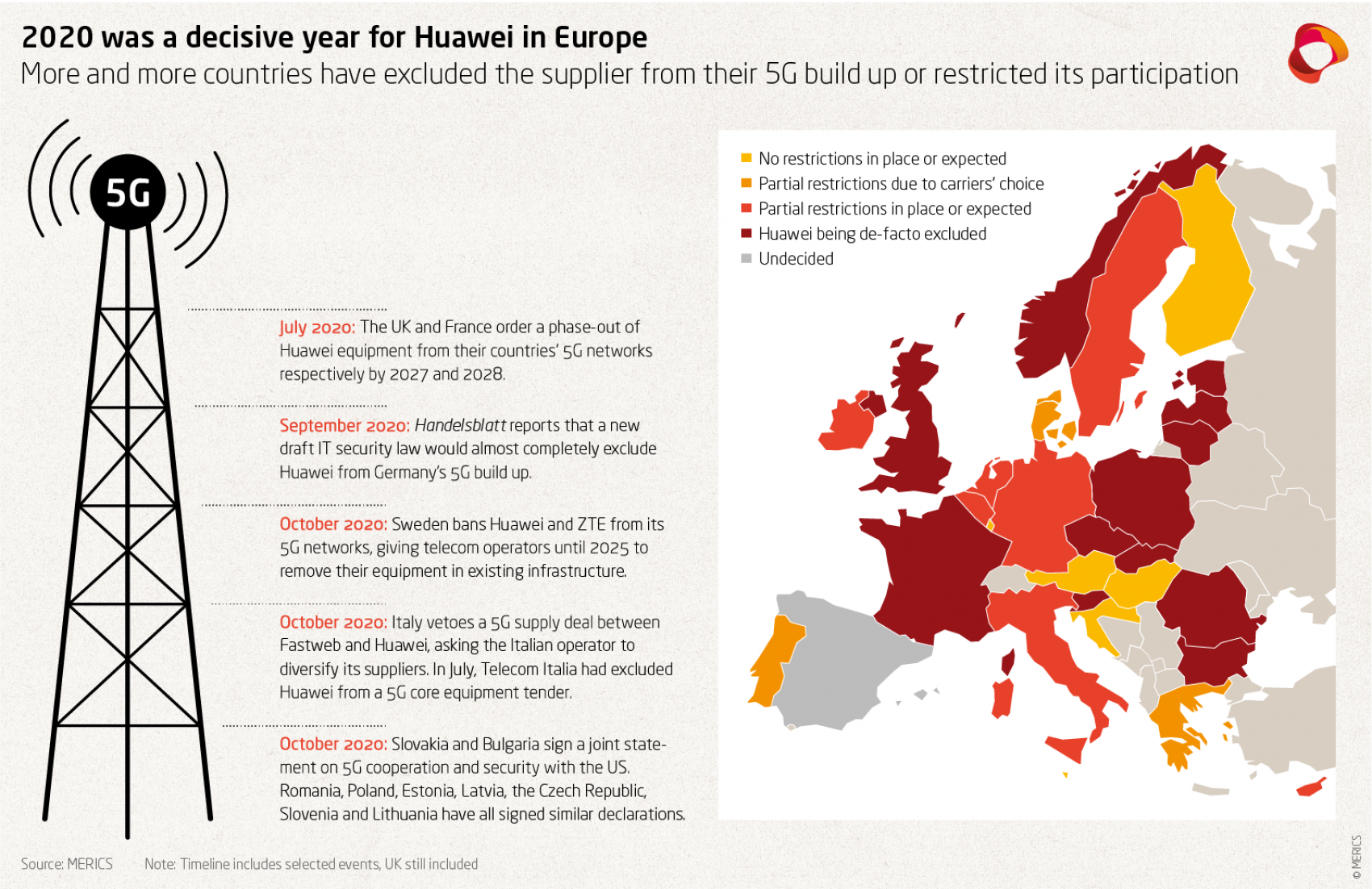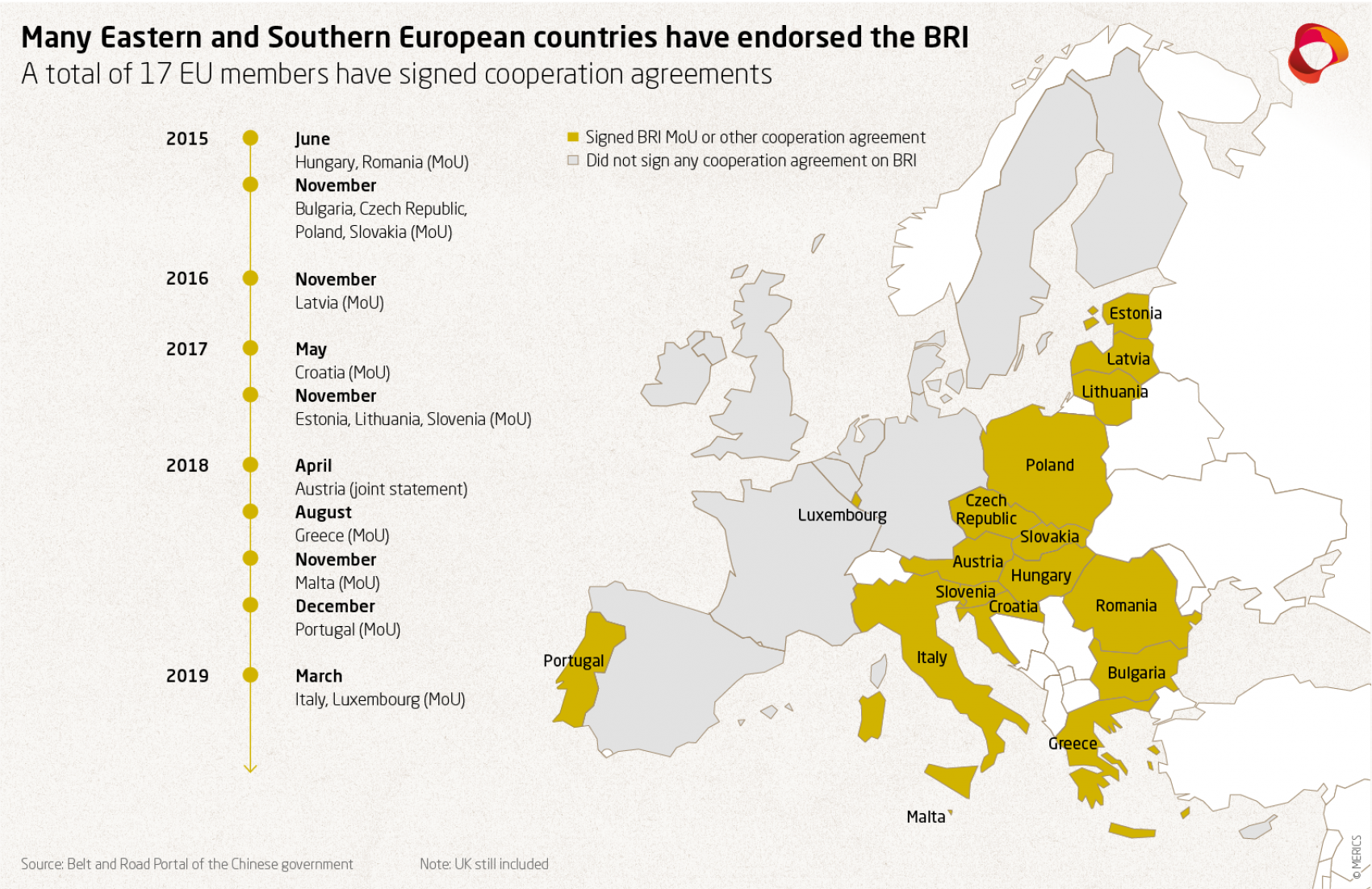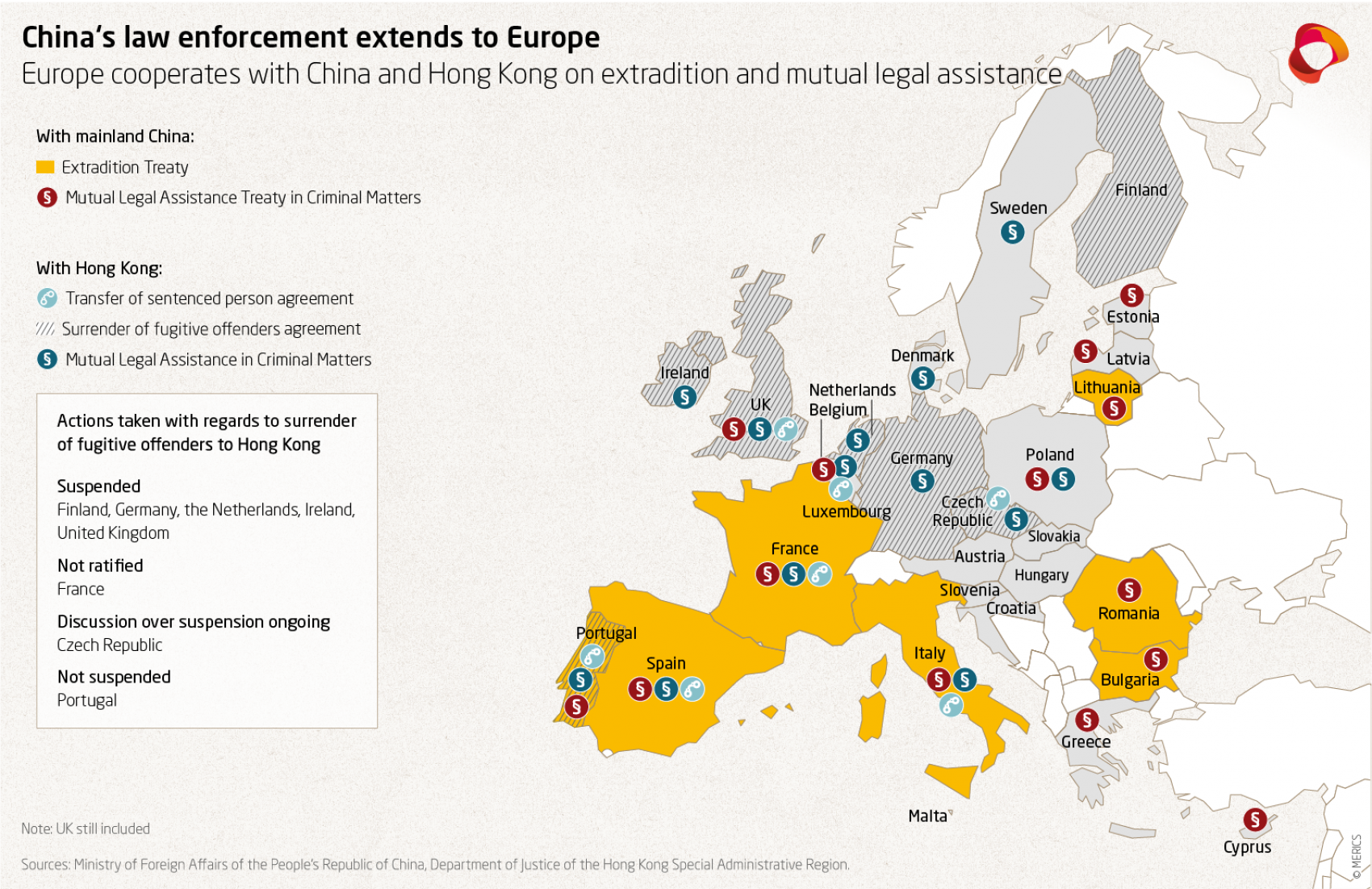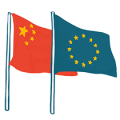
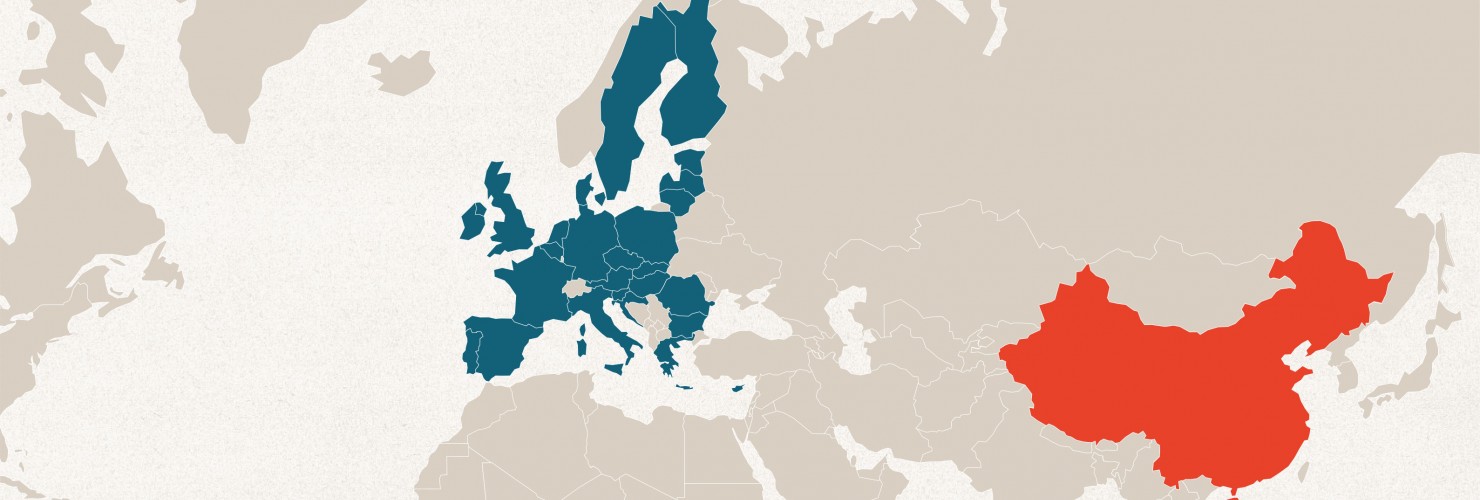
EU-China Mappings: Interactions between the EU and China on key issues
2020 was a decisive year for Huawei in Europe
In 2020, most European governments restricted Huawei’s participation in the rollout of their countries’ 5G networks. Approaches vary from blanket bans in the UK and Sweden, to tighter regulatory frameworks which de facto discourage operators from using Huawei technology, like in Italy. A number of European countries have also signed onto the US’ Clean Network Initiative, affirming their commitment to only allow trusted vendors in their fifth-generation infrastructure. This is the case for Poland, Romania, and other countries in eastern Europe. Meanwhile, debates about security risks involved in working with organizations linked to the Chinese party-state have extended to other areas of EU-China relations, such as cooperation in research and innovation.
Many Eastern and Southern European countries have endorsed the BRI
Between 2015 and 2019, many European governments signed onto the Belt and Road Initiative (BRI) in hopes of expanding trade and investment ties with China. All members of the 17+1 framework in eastern Europe are part of the BRI. In 2019, Italy became the first G7 state as well as EU and NATO founder to join the Initiative. However, while European countries remain interested in economic cooperation with China, the overall attitude towards the BRI has grown more skeptical throughout the years. Critics say it lacks transparency and does not meet free trade, environmental and other standards. Economic opportunities have largely failed to materialize, and in some countries the trade imbalance in bilateral relations has further widened in China’s favor after the signing of BRI MoUs.
EU countries are not fully aligned on Beijing’s human rights violations
The EU has created its global human rights sanctions regime, also in response to China’s human rights violations in Hong Kong and Xinjiang. More European countries have started to pay attention to Beijing’s human rights abuses, as visible in the growing number of governments that have signed UN statements condemning China’s behaviour. However, not all EU members have backed these declarations. Commission President Ursula von der Leyen has proposed moving to qualified majority voting for the adoption of sanctions, but for the time being unanimity is still required. These intra-EU differences might hinder the use of sanctions against China.
China’s law enforcement extends to Europe
In July 2020, EU governments agreed to a package of measures in support of Hong Kong’s autonomy as a response to the National Security Law. These include stricter export controls for technology and equipment that could be used for repression, a revision of law enforcement agreements with the city and a review of visa schemes for Hong Kong citizens. In December, the EU finalized a new law on export controls, which will introduce greater due-diligence requirements for EU companies and governments. Most countries that have surrender of fugitive offenders agreements with the Hong Kong government suspended those treaties. However, extradition agreements between Beijing and several EU member states remain in place.
These mappings were compiled by Lucrezia Poggetti based on findings from MERICS reports on EU-China relations and Chinese FDI in Europe.
